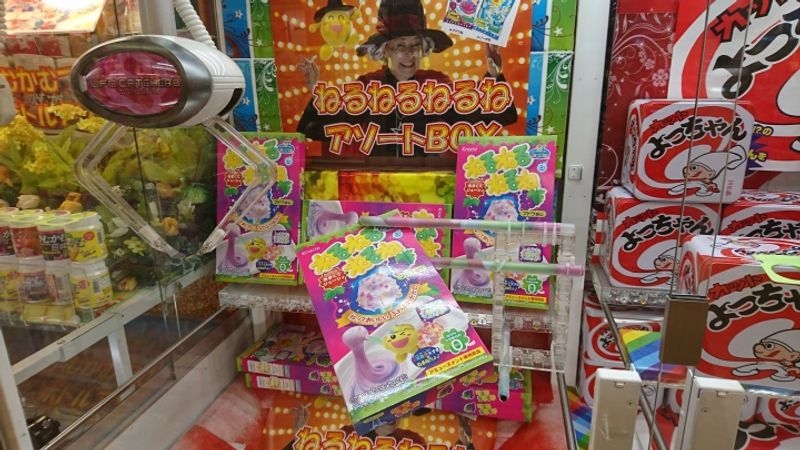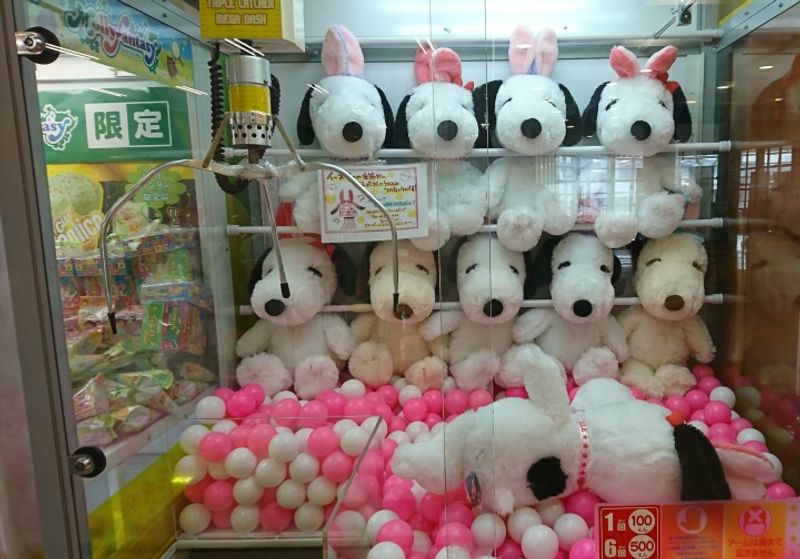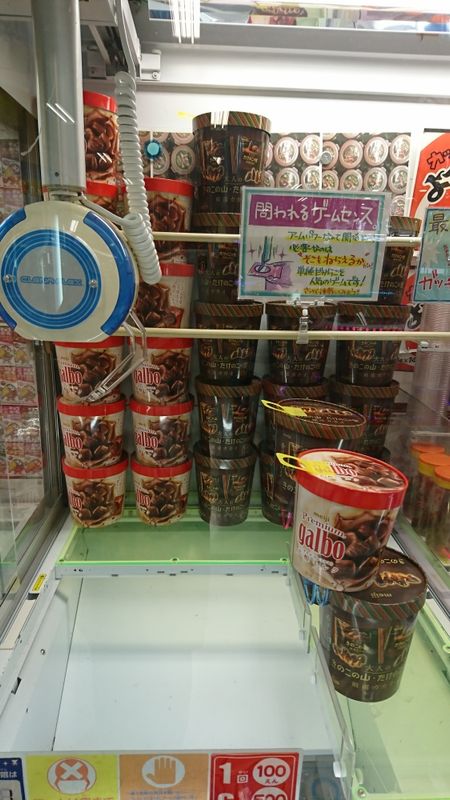Apr 27, 2017
A Guide to Crane Games

Stuffed toys. Chocolate. Replica katana. Wireless keyboards. Pocket watches. Anime figurines and models. Fukubukuro. Snacks. These are just a handful of things I have seen offered as prizes in the crane games inside of Japanese gaming centers. Some are bizarre, some enchanting, but most are deceptively difficult to deliver. Here are a few tips and tricks to get the most out of your crane-gaming experiences in Japan.
First, let's look at the variation of crane games currently offered. I realize that not everyone spent hours of their youth in the cheap arcade of a Texas bowling alley, mastering the art of the claw machine, but that lack of experience doesn't mean you can't win anything. While winning might not be easy, there are many variations of the machine and strategies to win. Let's start with the basics.

The most traditional model of the claw machine has a three pronged claw which is controlled by a joystick or button panel that move it into position above the desired prize. The claw then drops and clamps the prize, bring it up and into a prize chute or tilting it over an edge into a prize chute. In a perfect world, it's just that easy.
The tricky part?
In larger machines, the claw's tension can be loosened so its grip on the prize is tenuous at best. This means a one shot win is next to impossible. The loose claw prevents a proper hold from forming and may swing the prize in a number of not entirely intended directions.
Solution: Use your plays to lead the prize closer to the chute, placing the claw in a position to overlap the prize and the area between it and the prize chute, so the sloppy grip might still pull the thing closer to winning by your third or fourth attempt. This may sometimes backfire as the loose grip might swing the prize back away from the chute.

The 2-claw machines are frequently used for smaller plush toys or items in long containers that have to be pulled, tilted, or slid from their perch into the prize chute. Thinking about the weight distribution of the prize can be helpful here as a good grip on the heaviest area can knock the prize off balance and lead to an early win. With the box prizes, if there appears to be even weight distribution, think about physics. Where would a little claw pulling slightly upward do the most good? Guessing and checking is sometimes necessary to attain these prizes.

Positioning is also important in the little games as only the prizes in the very front are generally attainable. If you have your eye on a prize in the back, ask a game center staff member to come and help (just pointing at the prize can be helpful) or come back later to see if your prize has made its way to the front.

The final claw option is the one-claw machine, like a half-functional version of its two-armed sibling. The prizes are often marked by a small paper circle, which sticks out from the prize, waiting for the one claw to be perfectly positioned above it. Even when this happens, the result may only be a move of a couple of inches at the most, meaning this prize may be a significant expenditure of money, time and energy.

There is a minor cousin of the one-claw, which I call the scoop. These are usually little machines in the center-front of the game center, offering small toys or chocolate piled high on 4 plastic platforms, each emptying into its own prize chute. Below the evenly placed platforms, a conveyor belt of similar prizes rotates. For 100 yen, a player may use the one scoop attachment to scoop up prizes from the conveyor belt and drop them onto the platform, hopefully taking up enough space to knock over and win the tower of prizes. These take a lot of time and money to win, and usually the prizes can be purchased elsewhere cheaper, which is why these are usually the favorites of small children. That said, I did knock over the tower of chocolate wafers in a tiny game center in rural Gifu in 2008. It was glorious.

The last game on my list is the one at which I am the worst. The pincer game involves positioning a small set of pincer-scissors exactly behind a small exposed section of string connected to the desired prize. As you can see by the fraying of the string in this picture, even getting the thing into the right position does not necessarily guarantee a win.
Whatever your game and however you play it, good luck and have fun! Remember: if you don't win, you can probably buy the prize at BookOff later anyway.



4 Comments
Kasajizo
on Apr 30
Three times have I impressed my girlfriend (and this is why we`re still together) by casually walking up to a claw machine and winning on my first try. Two Rirakkuma and an Olaf key chain later and I am a claw machine Master in her eyes.
JTsu
on Apr 30
@Kasajizo Nice! I have very few 1-try wins, but I do have a number of second and third try wins. There's nothing like having your toddler believe you're the god of the crane machines...until you wind up wasting $10 on nothing.
KevinC
on May 1
After $15 I always call the staff to "Fix it" - reposition the prize for me, usually after a few more try I can get the prize. Never got it on the first try.
JTsu
on May 1
@KevinC That is a very good idea, providing the staff is awesome and helpful. I tried that recently at a place near my home but to no avail-- the staff insisted the item was attainable, so I walked away. That said, yesterday in Sendai a guy repositioned a charmander plushy for us after just 3 unsuccessful tries. Depends on the staff I guess.